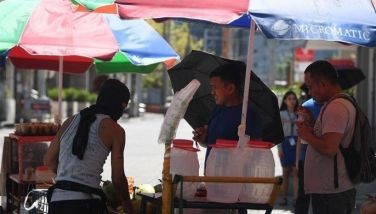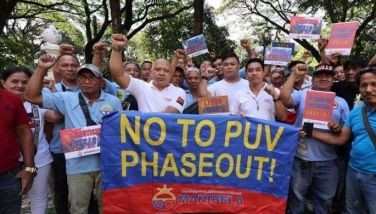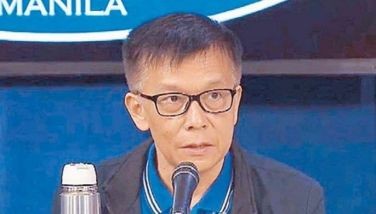Over 2,000 aftershocks
Damaged buildings still unsafe – Phivolcs
MANILA, Philippines - The chief of the Philippine Institute of Volcanology and Seismology (Phivolcs) advised yesterday residents in earthquake-hit areas not to occupy damaged houses or buildings to avoid injury from aftershocks that continued to rock central Visayas.
Phivolcs director Renato Solidum said as of noon yesterday, a total of 2,078 aftershocks had been recorded from the magnitude 7.2 quake that hit Bohol and Cebu last week, killing at least 185 people.
Solidum, however, said only 39 of the aftershocks were actually felt.
“Aftershocks are still possible in the coming days, weeks but decreasing in number,†Solidum said.
He said aftershocks could cause additional damage to “already damaged houses and buildings or cause landslides in areas already destabilized and (in) unstable slopes.â€
No new fault
Solidum also clarified that the magnitude-7.2 tremor that struck Bohol was not triggered by a new fault.
“That one (fault, north offshore of Bohol) is a hidden or blind fault, it does not appear at land surface,†the Phivolcs chief said.
“We already postulated its presence possibly offshore of Bohol when we did the ground shaking hazards assessment in 2007 under the United Nations-funded READY project, that is why we estimated Intensity 7 to 8 shaking at northern side of Bohol,†he explained.
Earlier, Ismael Narag of Phivolcs said that the powerful quake that rocked Bohol and Cebu last Oct. 15 could be triggered by the new fault system and not the East Bohol fault.
Solidum said they initially indicated the East Bohol fault as the epicenter of the deadly quake based on the data received from their instruments.
He also said electricity was cut in most parts of the areas devastated by the quake, preventing them from getting more information.
“The orientation of the postulated fault was not defined because of few earthquake events but with the current earthquake events we will be able to image this better,†he said.
Solidum said they have installed five additional seismographs after the main shock to properly locate smaller aftershocks.
He also said the agency has ongoing active faults mapping.
“Phivolcs geologists map the active faults using our regular fund or sometimes part of international collaboration like READY projects but our experts mapped the active faults in this project,†he said.
Solidum said they have an ongoing review of active faults in Mindanao with the Japan International Cooperation Agency.
Solidum said everybody should be prepared for earthquake even though they are far from active faults as ground shaking and other hazards could affect them.
“Cebu is very far from the epicenter of the quake but it was affected by ground shaking,†Solidum said.
- Latest
- Trending






























